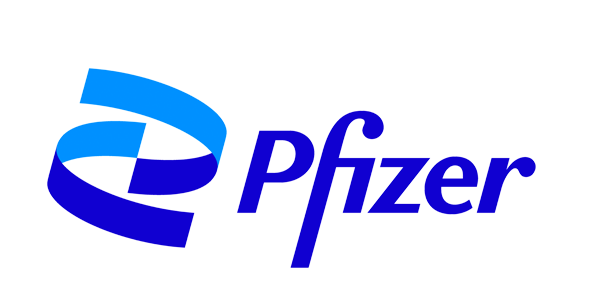 In Canada, Aimovig (erenumab) is currently the only approved CGRP antibody but Emgality (galcanezumab) and Ajovy (fremanezumab) are being considered by Health Canada and are expected to be available at the end of 2019 or early 2020. As Canadian physicians start using anti-CGRP therapies, Dr Elizabeth Leroux, Headache Neurologist in Montreal, Quebec, and President of the Canadian Headache Society, addresses some common issues related to prescribing and access.
In Canada, Aimovig (erenumab) is currently the only approved CGRP antibody but Emgality (galcanezumab) and Ajovy (fremanezumab) are being considered by Health Canada and are expected to be available at the end of 2019 or early 2020. As Canadian physicians start using anti-CGRP therapies, Dr Elizabeth Leroux, Headache Neurologist in Montreal, Quebec, and President of the Canadian Headache Society, addresses some common issues related to prescribing and access.
- Which patients should be considered for anti-CGRP treatment?
CGRP monoclonal antibodies (MABs) have been studied in patients with four migraine days or more per month though, in practice, factors other than migraine frequency must be taken into account. We need to consider the disability associated with attacks, the medical background and contra-indications to other drugs, and the preferences of the patient.
Coverage is a key factor, especially for a costly drug. At present, public and private insurers in Canada are evaluating erenumab reimbursement. Criteria for access include eight days or more of migraine per month and previous failure of two other preventives recognised in the Canadian guidelines. Once decisions are made, physicians will need to include this information in their clinical recommendations, as a patient could be an excellent candidate medically but, if coverage is denied, access would be limited.
- What dosing schedule is most appropriate?
In the studies on erenumab, both the 70 mg and 140 mg doses were shown to be effective, and there does not seem to be a significant dose-efficacy relationship. In refractory patients though, a sub-analysis showed that the 140 mg dose had a better odds ratio for success. Regarding side effects, once again the two doses did not differ significantly, but clinicians are used to associating a lower dose with better tolerability. This approach of ‘start low-go slow’, well known for oral preventives, may not be appropriate for MABs.
At present, clinicians might choose to start with erenumab 140 mg for refractory patients, and 70 mg for other patients, with the option to increase the dose in this second group according to the response. We are all on the learning curve and hopefully Phase IV studies will be published to guide practice in more detail.
- What do patients need to know when starting treatment?
Patients should be aware of the expected response rate and the potential side effects. Expectations should be reasonable as the response rates vary between 50% for some patients and 30% for more refractory patients, who are also the ones most likely to try MABs. MABs have virtually no interactions with other medications, which is a big advantage. Patients should be taught how to inject the product safely and if needed, should have access to resources to help with the first injection. Most patients can manage auto-injectors well, but a bit of help at the beginning is often required.
Regarding side effects, they seem to be more frequently reported in real life than in the studies, and this should not be surprising. This phenomenon has been seen with other medications in the past. This being said, we can wonder about the impact of social media in increasing the expectations of side effects. Forums discussing dramatic side effects may increase anxiety and favour a nocebo effect. Our responsibility is to carefully observe and record side effects to be able to inform our patients fairly. Rare adverse events should be recorded to document long term safety. We already have reassuring data on up to three years of erenumab but as the number of patients exposed grows, we’ll have access to more data.
- What does a good response look like?
Looking at the results from the trials, it comes as no surprise that some patients respond better than others. It may be that the underlying pathophysiology of their migraine is more CGRP-related. These ‘super responders’ can improve by 75% on frequency and also show improvements in pain intensity and associated symptoms. These are the patients who talk about a miracle effect. In studies, the 75% response rate was observed in 10 to 20% of patients. Some patients may exhibit a more modest 30% response. In chronic migraine, such an improvement may be clinically significant, and lead to an improvement in daily function.
- How do you decide that a patient isn't responding and should stop treatment?
Evaluating the response to a therapy can be obvious in the case of a 75% response, but a headache diary is always helpful. If a patient is not reporting any significant improvement in frequency and/or intensity after three months, studies suggest that it is unlikely that there will be a response. This being said, clinicians working with refractory patients (who were excluded from studies) may prolong the trial period as we do not know if a longer trial could lead to success in this severely affected population. Discussions with colleagues suggest that some patients may improve after three months. This is an important topic for Phase IV studies.
- What ongoing research is needed into anti-CGRP therapies?
Dozens of ideas are discussed in the scientific community. There is so much we have to learn. As we use these new therapies in the clinic, research questions become evident. We can list a few: the use of MABs in combination with Botox, the effectiveness in special populations (elderly, paediatric, treated with opioids, with vascular disease) or patients suffering from particular headache subtypes (hemiplegic migraine, vestibular migraine, new daily persistent headache, post-traumatic headache). A lot of work ahead!
- Are there any studies underway of anti-CGRP therapies that involve Canadian centres?
A phase IV trial named MAGIC, involving erenumab therapy for patients who have failed two to five preventives, will be initiated soon.
- How easy is it to get anti-CGRP therapies paid for in Canada?
 Health care is managed provincially in Canada. A majority of Canadians are insured by private payers in association with their employers. Public coverage is available but varies. Some provinces, such as Quebec, have mandatory public coverage. It can be bewildering for physicians to be aware of which drug plan will cover MABs for which patient.
Health care is managed provincially in Canada. A majority of Canadians are insured by private payers in association with their employers. Public coverage is available but varies. Some provinces, such as Quebec, have mandatory public coverage. It can be bewildering for physicians to be aware of which drug plan will cover MABs for which patient.
At present, the jury is still out. Private insurers seem to be open to the reimbursement of MABs, at least partially. Public coverage is still undetermined. The Canadian Agency for Drugs and Technology in Health (CADTH) evaluates the cost-effectiveness of therapies and makes recommendations on coverage for public insurers. Erenumab is currently being evaluated, and it is very probable that galcanezumab and fremanezumab will be too. Decisions may take two years and, of course, we hope for a favourable decision.
The co-prescription and coverage of Botox will be a major issue, as many chronic migraine patients get a partial relief with Botox therapy but then get even more relief from the combination with a MAB. This may seem like a costly treatment, but polytherapy is a common approach for multiple other chronic disorders and optimal quality of life should remain our goal for migraine patients. Once again, we are waiting for the insurers’ decisions.
CGRP MABs are a revolution in headache care. We have a lot to learn, but more to offer to our patients. The migraine community should be better organised to advocate for equitable access to optimal care.






